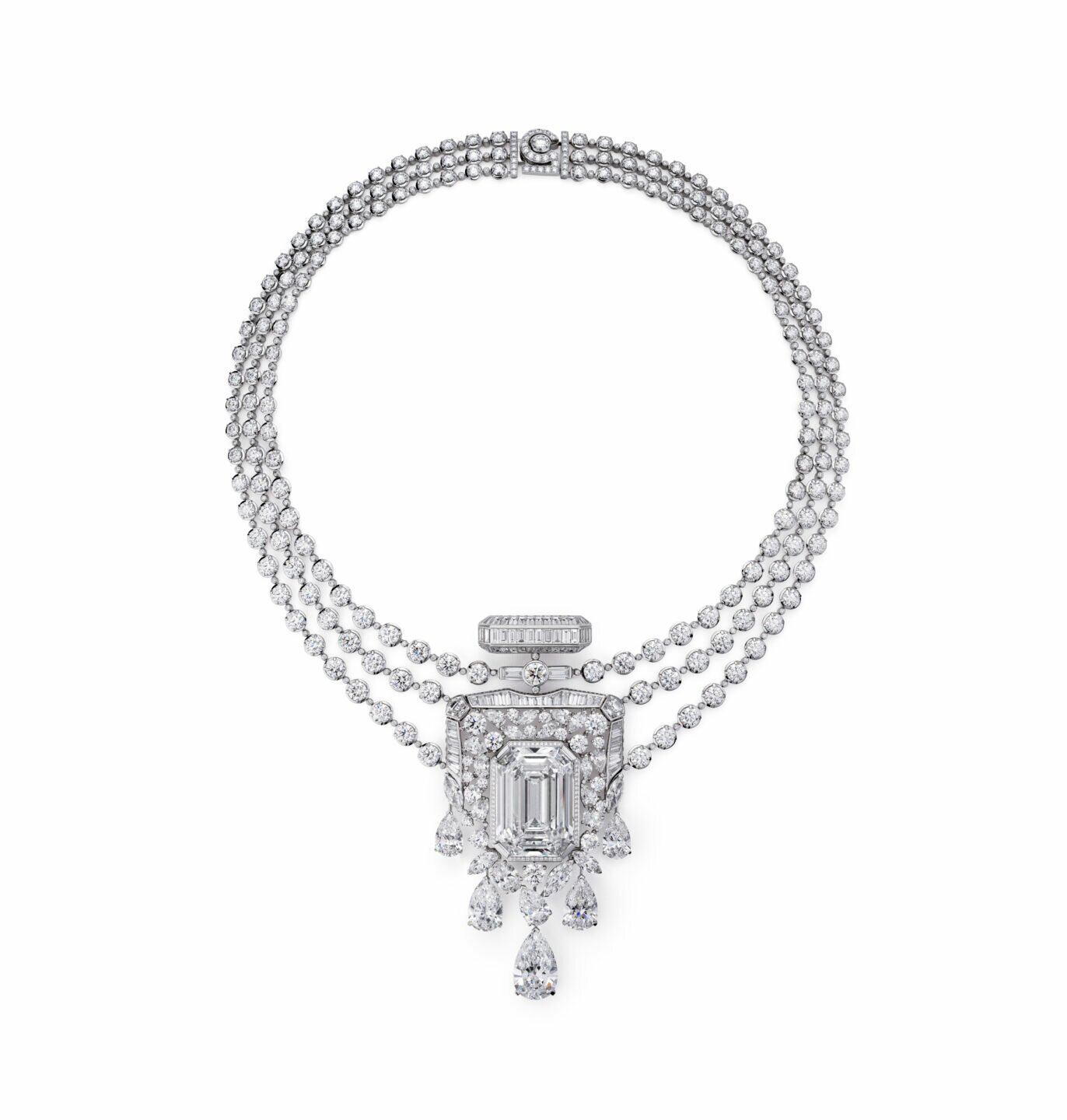Chanel has turned something as innocuous as the number five into a cultural icon. The N°5 perfume, developed by its eponymous founder and forever muse Gabrielle Chanel, together with perfumer Ernest Beaux, stands resilient against the vagaries of time to turn a grand 100 this year. To mark this milestone, Chanel has created Collection N°5, a breathtaking set of jewels — its largest yet — inspired by the different facets of the legendary scent.
“I didn’t want to just pay tribute. I conceived this collection as an immersive experience — a journey into the very soul of the N°5 perfume,” says Patrice Leguéreau, director of Chanel’s Fine Jewelry Creation Studio. At the helm of its jewellery making endeavours since 2009, he considers this collection to be “undoubtedly the most personal and most intimate high jewellery collection that we have ever done”.
That says a lot, coming from the mastermind behind collections like Sous le Signe du Lion, Coco Crush (which takes the famous quilted motif on Chanel bags and transforms them into bejewelled creations) as well as jewellery lines that bear revisited iconic symbols including the feather, comet and wheatsheaf.
To immerse himself in the fragrance, Leguéreau dove straight to its source.
“I wanted to rediscover the spirit of Gabrielle Chanel. I travelled to Grasse, went to the fields of jasmine and May roses with Olivier Polge (House perfumer since 2015), and nourished myself on the fragrance. I questioned how we would tell this story without being too literal and yet successfully translate the magic and mystery of N°5. I wanted to express the fluidity of the perfume through the metal and stones. The dialectic of this collection quickly appeared: to transform an icon of perfumery into an icon of jewellery,” he says.
And Leguéreau started work on the collection immediately after.
“I was sitting at my drawing table and with a few brushstrokes dipped in Indian ink, I attempted to illustrate, without concession, the power, strength, femininity and incredible richness of the jus,” he explains. The result is a 123-piece strong collection divided into five chapters — bottle, stopper, number, flower and sillage — each one an identifying element of the perfume.
“We used the visual identity of the bottle to reach into the imagination of the fragrance,” he says. Indeed, the distinct architecture of the bottle, designed to resemble a whiskey decanter, is a recurring shape in the collection.
“Concealed or revealed, the N°5 bottle represents the archetype of perfume just as the diamond symbolises high jewellery,” adds Leguéreau.
This explains why the flacon has been used as the focus of the most emblematic piece in the entire collection. Christened the 55.55 necklace, it features a custom-cut 55.55ct D Flawless Type IIA diamond encased within a white gold bezel and set with 104 round and 42 baguette diamonds. An utterly extravagant and exceptional creation, this is not for sale and will remain permanently in the brand’s heritage collection.
The bottle stopper, with its octagonal shape echoing the outline of the Place Vendôme, is expressed as a graphic motif in diamonds, coloured gemstones and rock crystal.
“We started with the shape of the stopper… and used crystalline materials, whether rock crystal or white diamonds, because they evoke the fragrance’s bottle while underscoring the graphic beauty of the jewels,” he says.
The number five, with its voluminous and curvaceous form, has also been adopted as a design element. Sitting pretty on ear lobes, boldly emblazoned across a finger or resting off-centre on the collar bone, it is fashioned into a sculptural knot in some pieces, as a nod to the fashion house’s heritage.
“The ribbon motif is linked to couture, Gabrielle’s primary activity, and also adds a touch of sensuality to the design of the number five,” explains Leguéreau.
As for the flowers, key ingredients that make up the olfactory notes of N°5, Leguéreau likens the jasmine, May rose and ylang ylang to the cosmic themes from Gabrielle Chanel’s very first (and only) high jewellery ensemble, the Bijoux de Diamants collection from 1932. He describes these sparkling clusters of diamond studded petals as “clouds of flowers reminiscent of an infinite constellation”.
The last chapter, sillage (French for the perfume trail that lingers in the air when someone leaves the room) is the most abstract representation of the scent. Leguéreau moves from “the visible to the invisible to express the olfactory explosion of the perfume and its trace (both tangible and intangible)”. Inspired by droplets of perfume, he uses pear-cut stones to mimic tiny globules of liquid and designs pieces with radiating shapes to represent the diffusion of scent particles emanating from its source.
In the Diamond and Blushing Sillage necklaces, for example, adorned in diamonds or a mixture of diamonds, rubies, spinels, garnets and yellow sapphires, the jewellery wraps around the neck like a fragrant cloud of perfume. Leguéreau also shares that amber-hued gemstones like citrine and imperial topaz were used because they resemble the colour of the N°5 scent and because “they evoke a sense of femininity”.
“There are so many links between perfume and jewellery. Beyond the fact that they both come into direct contact with a woman’s skin, these two universes both embody Chanel’s values of excellence and audacity. In 1921, Gabrielle Chanel imagined ‘a perfume for women with the scent of a woman’ that became the precursor to the fragrances of tomorrow. In 1932, her Bijoux de Diamants high jewellery collection introduced new ways of wearing jewellery because she encouraged women to integrate these precious jewels into their outfits as an expression of personal style. There is the same creative impetus in both cases,” says Leguéreau.




